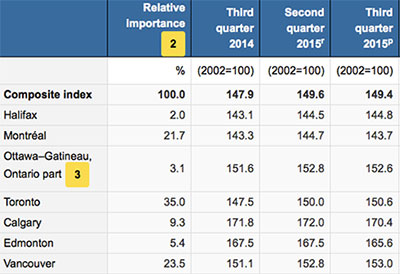Seize the PoE Opportunity with the Right Testing and Troubleshooting

Mar 7, 2021
By Mark Mullins
As an electrical professional, there’s no doubt that you’re now being exposed to Power over Ethernet (PoE) as a means of delivering low-voltage DC power over network cabling to LED lights and a variety of other components — from nurse call and building automation devices, to cameras and access controllers. And with a 90% growth in the next 10 years from PoE lighting alone, it’s no wonder that the IBEW is experiencing huge demand as a training delivery agent for the Network Cabling Specialist (NCS) designation they’re now referring to as “the trade of the future.”
Whether you’re already designing and installing PoE systems, or gearing up to seize this amazing opportunity, you need to ensure that your PoE projects go smoothly. And that comes down to understanding how PoE works and how it’s classified — and then learning the best practices to ensure it will work and will keep working.
A safe handshake with class
You’re already familiar with how DC power works and are likely used to implementing conversion technology and step-down transformers to power LED lighting. But PoE is a bit different in that it eliminates the need for any AC power or conversion, delivering DC power directly over the same twisted-pair cable used to connect devices to a local area network and enable data transmission.
In a PoE circuit, the DC power is delivered to a powered device (PD) from power sourcing equipment (PSE), which is typically a network switch located in a telecom room. It can also be a midspan PoE injector for scenarios where a PoE switch is not available. In all PoE implementations, power is delivered by the PSE only after it is requested by the PD, and if the PD is disconnected, the PSE will remove power. This “handshake” that happens between the PD and PSE makes PoE safer than other power delivery methods that always have power flowing, regardless of whether you’ve got a device plugged in. Plus, we’re only talking about voltages in the range of 43 to 57 VDC so it’s considered safety extra low voltage (SELV).
In a PoE installation, power can be delivered differently depending on the power level and type of PoE being used, which is defined by its IEEE standard. Early PoE standards, like IEEE 802.3af Type 1 that delivers a maximum of 15.4 W (13 W available at the device) and IEEE 802.3at Type 2 (PoE+) that delivers a maximum power to 30 W (25.5 W available at the device), deliver power over just two pairs of a four-pair cable. For more power hungry devices, IEEE 802.3bt can also deliver power across all four pairs, either via Type 3 that delivers a maximum of 60 W (51 W available at the device) or Type 4 that delivers a maximum of 90 W (71.3 W available at the device). Regardless of which type is being used, DC power is transmitted over the pairs by applying common-mode voltage, meaning that current is split evenly between each pair and between the two conductors of a pair.
Since PoE standards and types are a bit confusing and encompass a wide range of power, classes are used to further define the power. There are a total of eight classes ranging from Class 1 with just 4 W delivered, to Class 8 with the maximum 90 W delivered as shown in the table below.

PoE Types, Standards and Classes
To ease implementation, the Ethernet Alliance has a PoE certification Program for easily identifying PSE and PDs by class to determine compatibility. This program uses a 300-page test plan and approved equipment to certify products and provides a simple, easy-to-understand marking system. Just look at the marks and if the PSE is equal or higher to the PD, they are compatible.

Ethernet Alliance Marks for PDs (left) and PSE (right)
A vital PoE test parameter
If you’re already installing low-voltage twisted-pair cabling for networks, you should be familiar with the need to certify the cable plant to ensure standards compliance and achieve a vendor warranty. While cable certification ensures that parameters such as length, attenuation, crosstalk and return loss are in accordance with industry standards, when it comes to PoE there’s another parameter to consider.

As previously mentioned, PoE is delivered via common mode split between pairs and between conductors of a pair. For this power split to happen, the DC resistance between two conductors in a pair and the DC resistance between pairs must be balanced. If DC resistance is not balanced, it can cause PoE to malfunction and distort the data signals transmitting on the same pairs. Industry standards specify the maximum DC resistance unbalance within a pair and from pair-to-pair.
While field testing for DC resistance unbalance is technically optional, it is highly recommended for PoE installations. And don’t be fooled by DC resistance unbalance specifications on a vendor’s cable — DC resistance unbalance is more often caused by poor workmanship such as exceeding maximum bend radius, not maintaining pair twist as close to the point of termination as possible, or not terminating each conductor consistently. While conductor termination consistency can be easier to achieve when using a multi-wire punchdown tool (plus it can ease hand fatigue), field testing for DC resistance unbalance is really the only way to ensure performance for PoE after installation. Thankfully, there are now industry testers on the market that allow you to easily add DC resistance unbalance testing to the mix. The tester screens below shows testing results for DC resistance unbalance on individual pairs (PAIR UBL) and between pairs (P2P UBL).

Testers are available that test DC resistance unbalance on individual pairs and from pair to pair.
The right tool to troubleshoot
Even if you’ve certified the cable plant and did the recommended DC resistance unbalance testing, things can still go wrong — especially if the PSE and PD are not compatible. Knowing the class of the PSE and the PD is the first step to troubleshooting PoE. Unfortunately, not all PSE and PDs have the Ethernet Alliance marking, or the mark may not be easily accessible or visible. A PD may be located up to 100 meters away from the PSE back in the telecom room, and you need to check the class of both to know if they’re compatible. Furthermore, if you’re checking multiple PDs, they may not necessarily be powered by the same PSE. Even if the PSE and PD do end up being compatible, there could still be a problem with the cable itself. You could waste half a day just tracking the cable and accessing the PSE.
One way to ease this process, is to use a troubleshooting tool specifically designed for PoE. These tools are cost-effective and easy to use, allowing you to simply plug into an outlet at the PD location to find out if it’s connected to PSE and what the specific class of power is on the link to ensure if will support the device. Some of these tools will even identify the data speed on the link, as well as length, potential cable breaks or other failures — all right there from the device end.
While you may be new to PoE, it doesn’t have to be complicated and you can easily ensure your installations go smoothly by including DC resistance unbalance in your certification testing and choosing the right troubleshooting tool.
Mark Mullins is one of the founding members of Fluke Networks, starting in 1993. He has been involved in all of the key areas of the business, including cable testing, network troubleshooting and analysis. He currently oversees the company’s Global Communications efforts, keeping customers and prospects up-to date on cable testing products and technologies. As a member of the Ethernet Alliance Marketing Committee, he is responsible for promoting the Gen 2 Power over Ethernet Certification program. He holds a B.S. in Computer Science and an MBA from the University of Washington.














